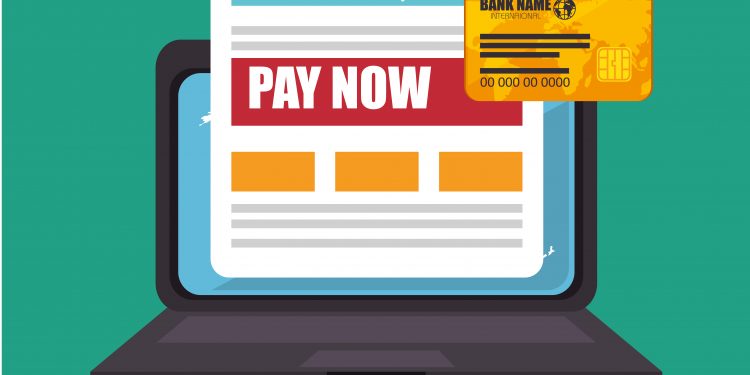Instant payments are the ‘new normal’. The last decade saw a ramp-up in adoption as regulation, customer expectation and technology dovetailed to create immediate, 24/7 demand for financial services.
1. Request to Pay for more control
Perhaps the most valuable new way to leverage instant payment rails is Request to Pay (R2P). R2P is an umbrella term for various scenarios in which a payee takes the initiative to request a specific payment from the payer.
Corporates have two key challenges in that they only receive funds when a customer wants to pay them, and they only receive the information the customer chooses to provide. This makes reconciliation difficult and can even negatively impact workflow and working capital.
However, the R2P options for bill presentment and payments solve these problems, significantly reducing operational cost, liability for chargebacks and fraud risk, as well as improving reconciliation and liquidity. A secure R2P service also has the potential to simplify managing receivables and reduce processing costs.
R2P also benefits consumers. As they are presented with a payment request rather than funds being debited automatically, they can enjoy more autonomy and control over their money across various channels.
As a result, several solutions have emerged under the R2P banner, such as the IDEAL scheme in The Netherlands and PromptPay in Thailand. Further traction will be gained, with EBA Clearing gearing up to launch a pan-European R2P solution in 2020. Certain banks in the US have also begun to go live with The Clearing House ISO 20022 R2P messages using instant payments infrastructure.
2. Amplify the power of QR codes
QR code solutions have surged in popularity in recent years as a simple, low-cost alternative payment method, offering consumers and merchants more choice at checkout.
We are now seeing various banks and payments industry players reviewing their strategies to take full advantage. QR code-based solutions, combined with instant payments rails, can extend utility beyond the physical point-of-sale to include online and bill payments.
Thailand, India, China, Singapore, Malaysia and Hong Kong have all established payment services that leverage QR codes to initiate real-time payments. And although Europe and the US have been slower to adopt QR codes, some European countries such as Sweden and Switzerland have already embraced the technology with country-wide schemes for both retail and corporate payments. In the US, adoption is market-led with several retailers such as Target and Walmart implementing proprietary QR code payment systems.
3. Leverage valuable real-time data with ISO 20022
While instant payments does not inherently provide enhanced data opportunities, most of today’s instant payments systems are built using the ISO 20022 data standard. This is due to the extended data-carrying capabilities and the added value this messaging standard can offer banks’ customers. For data to be truly valuable, it needs to be machine-readable, consistently structured and standardised – ISO 20022 enables all that.
However merely collecting data is not enough. Mining and extracting value from this data will be a decisive differentiating factor for banks and other players looking to take their customer propositions to the next level.
The good news is that banks and PSPs are well-positioned to collate and leverage data to deliver tailored interactions, unlocking new revenue opportunities while remaining compliant to stringent regulation.
4. Deliver convenience for corporates
The combination of instant and enhanced data-carrying capabilities is extremely attractive to large corporates, and in turn, greater corporate usage of an instant payment system will increase volumes and lower costs.
Instant payments give corporate treasurers greater control over their payments, allowing them to make on-the-spot payment decisions and hold on to liquidity for longer. Instant payments enable informed and timely views on cash positions, enabling management of treasury risk. ISO 20022 data- carrying capabilities also allow corporates to attach invoice data to a payment, allowing for more efficient reconciliation.
Benefits are not only limited to corporate treasurers, but also B2C treasury departments. Instant payments offer new ways to make payments to customers. As mentioned, R2P can also lower cost, reduce risk of fraud, and increase information around each transaction, all of which are key requirements for modern treasury departments.
Moreover, as domestic instant payments schemes grow, there is an opportunity to line these systems together to deliver cross-border real-time movement of both funds and data for corporate and commercial transactions.
5. Embrace new channels
As payments become increasingly embedded in our daily lives and interactions, it is inevitable that instant payments will become more ingrained in the social media experience.
This is already the case across many Asian countries, but momentum is slowly building in Europe and the US as well. For example, First Direct’s Fdpay service allows customers to make P2P payments within social media apps. In addition, Instagram, WhatsApp and Facebook are all actively exploring instant payments and checkout options. Watch this space.
Building on strong foundations
It is clear that building a foundation for innovation now will enable banks to create points of differentiation and tap into new revenue streams through R2P, QR codes, leveraging enhanced data, corporate instant payments and new channels.
But to fully realise the return on investment, banks will need to overcome the legacy payment environments many are encumbered with, and will need to develop a powerful transformation strategy to ensure their payments landscape is equipped to fully harness the benefits.
To learn more about how to maximise the value of investments in instant payments, download our white paper.











